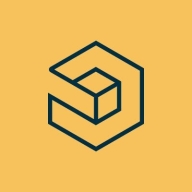

Logz.io and Microsoft Sentinel are two prominent solutions for log management and security analytics. Users are generally happier with Logz.io's pricing and support, while Microsoft Sentinel is often preferred for its comprehensive features and robust integrations.
Features:Logz.io users appreciate the platform's intuitive setup and extensive plugin integrations, which enhance its flexibility. Microsoft Sentinel is praised for its advanced threat detection, machine learning capabilities, and integration with Azure services. Thus, Microsoft Sentinel is deemed superior in terms of feature set.
Room for Improvement:Logz.io users highlight the need for better alerting mechanisms and enhanced scalability. Microsoft Sentinel users suggest improvements in documentation and a reduction in false positives. The areas of improvement indicate that Logz.io could benefit from technical enhancements, whereas Microsoft Sentinel needs more refinement in user guidance and system outputs.
Ease of Deployment and Customer Service:Deployment feedback for Logz.io is positive, with an emphasis on easy setup and helpful customer support. In contrast, Microsoft Sentinel’s deployment is noted for being more complex due to its extensive configuration options, though its customer service is also highly rated. Logz.io emerges as the simpler option, while Microsoft Sentinel provides a more configurable but intricate deployment experience.
Pricing and ROI:Logz.io users find the pricing reasonable and appreciate the transparent cost structure, contributing to a satisfactory ROI. Microsoft Sentinel's pricing can be higher, but users feel it is justified by the advanced feature set and integration capabilities, resulting in strong ROI perceptions. Logz.io is preferred for cost-effectiveness, whereas Microsoft Sentinel offers value through its comprehensive offerings.


Logz.io is a leading cloud-native observability platform that enables engineers to use the best open source tools in the market without the complexity of operating, managing, and scaling them. Logz.io offers four products: Log Management built on ELK, Infrastructure Monitoring based on Prometheus, Distributed Tracing based on Jaeger, and an ELK-based Cloud SIEM. These are offered as fully managed, integrated cloud services designed to help engineers monitor, troubleshoot and secure their distributed cloud workloads more effectively. Engineering driven companies like Siemens, Unity and ZipRecruiter use Logz.io to simplify monitoring and security workflows, increasing developer productivity, reducing time to resolve issues, and increasing the performance and security of their mission-critical applications.
Microsoft Sentinel is a scalable, cloud-native, security information event management (SIEM) and security orchestration automated response (SOAR) solution that lets you see and stop threats before they cause harm. Microsoft Sentinel delivers intelligent security analytics and threat intelligence across the enterprise, providing a single solution for alert detection, threat visibility, proactive hunting, and threat response. Eliminate security infrastructure setup and maintenance, and elastically scale to meet your security needs—while reducing IT costs. With Microsoft Sentinel, you can:
- Collect data at cloud scale—across all users, devices, applications, and infrastructure, both on-premises and in multiple clouds
- Detect previously uncovered threats and minimize false positives using analytics and unparalleled threat intelligence from Microsoft
- Investigate threats with AI and hunt suspicious activities at scale, tapping into decades of cybersecurity work at Microsoft
- Respond to incidents rapidly with built-in orchestration and automation of common tasks
To learn more about our solution, ask questions, and share feedback, join our Microsoft Security, Compliance and Identity Community.
We monitor all Security Information and Event Management (SIEM) reviews to prevent fraudulent reviews and keep review quality high. We do not post reviews by company employees or direct competitors. We validate each review for authenticity via cross-reference with LinkedIn, and personal follow-up with the reviewer when necessary.